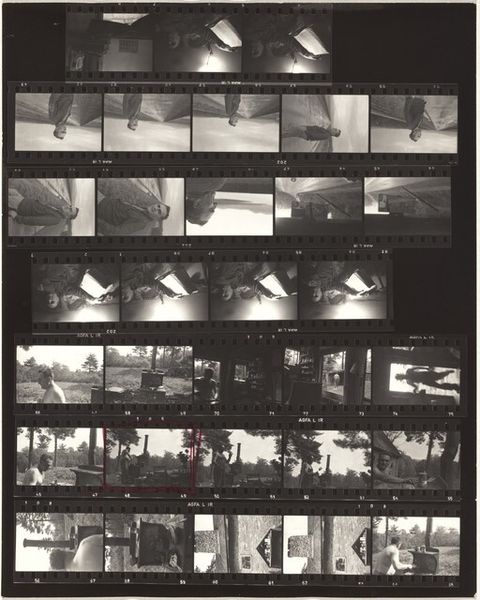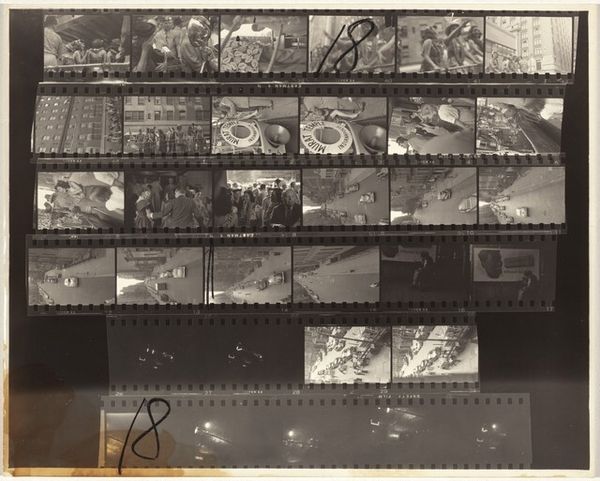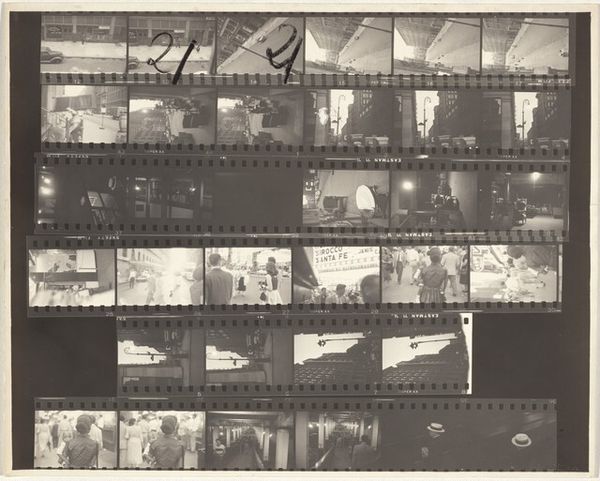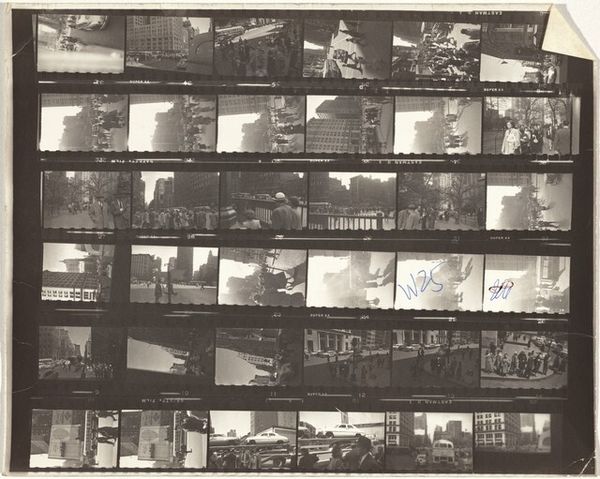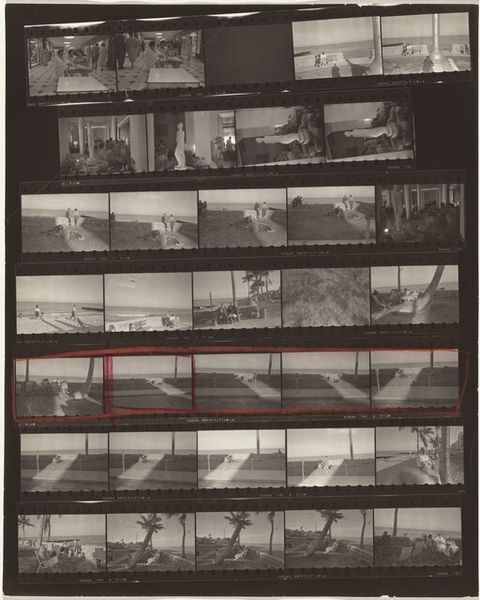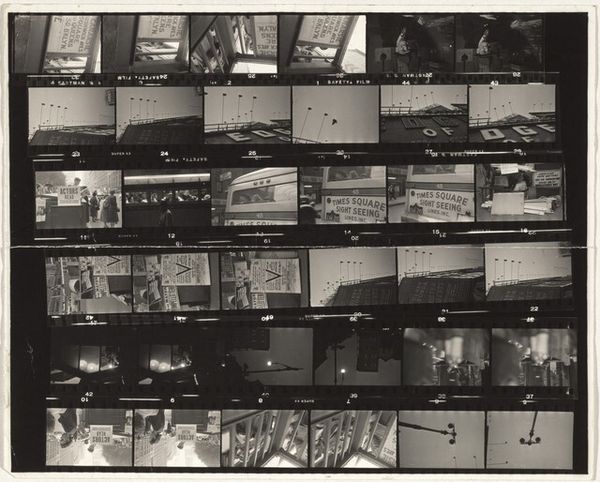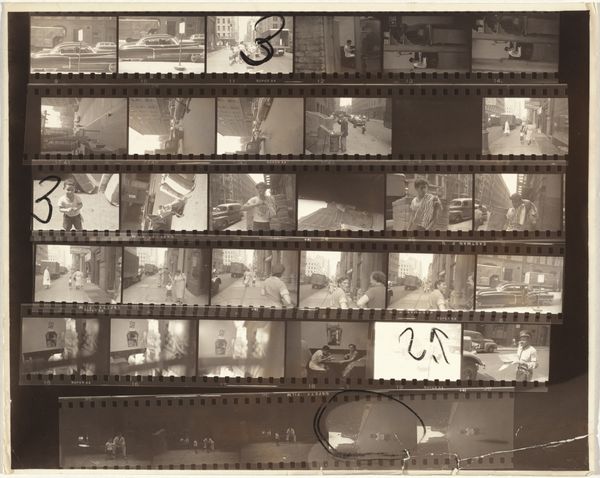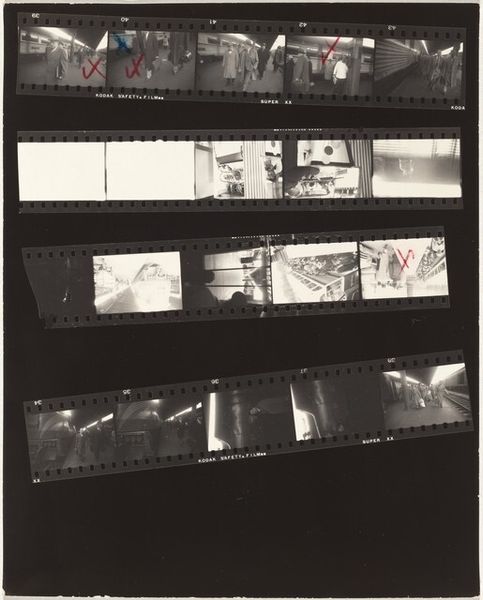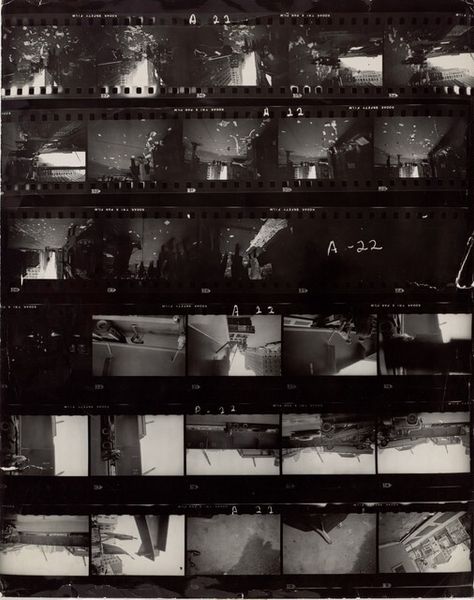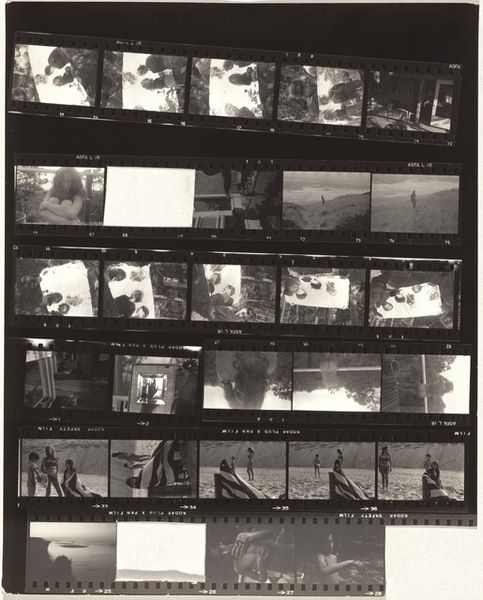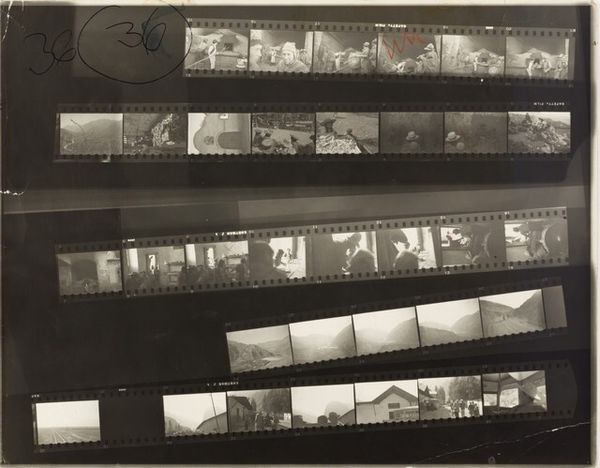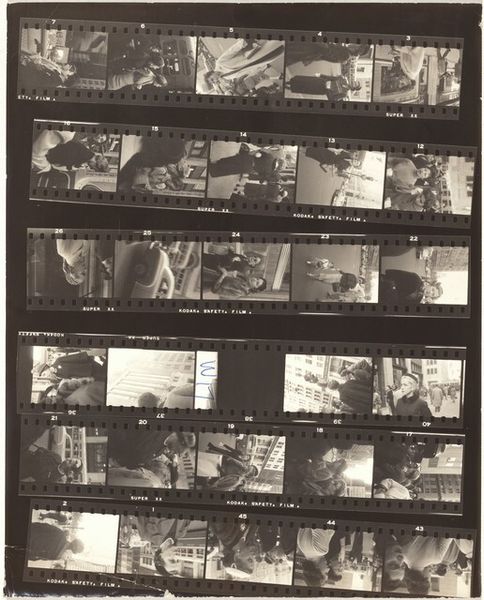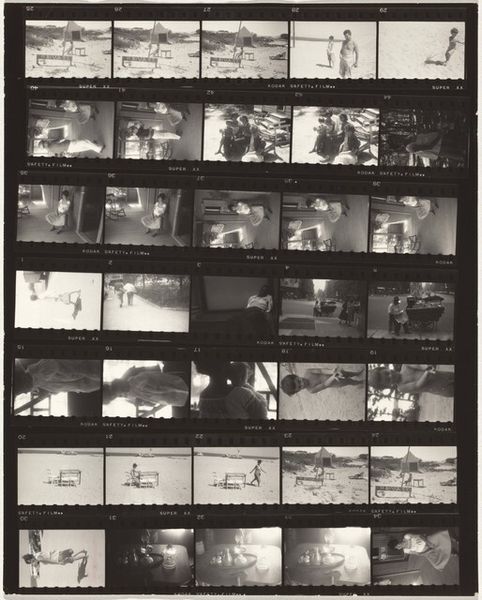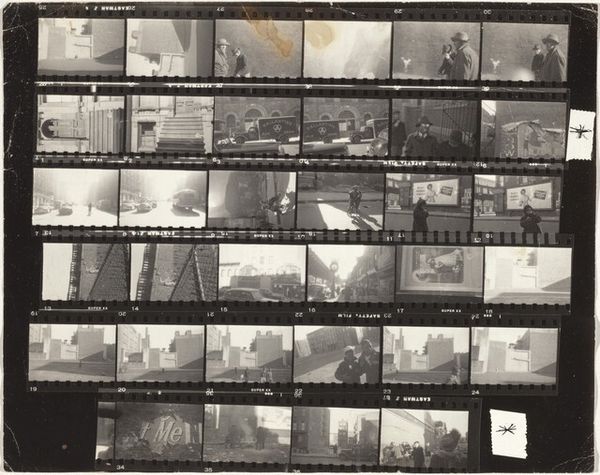
Dimensions: overall: 20.2 x 25.2 cm (7 15/16 x 9 15/16 in.)
Copyright: National Gallery of Art: CC0 1.0
Curator: Here, we have Robert Frank’s "11th Street story 10," a gelatin silver print made in 1951. Editor: It feels like looking through someone’s hazy memories. Fragmented and fleeting. The greyscale adds a layer of distance, doesn't it? Curator: Precisely. Note the intentional use of the contact sheet format. Frank presents several exposures from a roll of film. This emphasizes process over a single, perfected image. We are given access to outtakes that reveal how he moved and selected within the world. Editor: I see what you mean. It feels intimate and honest because of that. No staging, just slices of a streetscape presented raw with all its variations in light and perspective. Curator: It is fascinating to see how a car appears multiple times within a sequence and notice how its positioning on the street alters with the perspective and angle of each shot. You can observe this too in how Frank seems preoccupied with capturing the light refracting on wet pavement in the later exposures on the contact sheet. Editor: You're right. Those later frames do have a real textural quality, reflecting this post-war urban landscape. Knowing the context, there's a certain social commentary embedded in his selection, I suspect, of what and who to photograph. The presence and prominence of an "outsider" within society. The people he chooses, the mundane yet charged corners he frames…it hints at an era. Curator: Indeed, the act of sequencing invites viewers to compose their own narratives. Frank is providing only elements or gestures toward some implied narrative. The use of visual repetitions further cements such ideas. Editor: Seeing the process laid bare allows for so many unique interpretations; the city never truly feels fixed, always just beyond reach. The narrative here, as a result, becomes fluid. Curator: I agree. Ultimately, the image evokes both a sense of voyeurism and immediacy, all captured through his particular visual language of framing, composition, and sequential storytelling. Editor: For me, viewing these contact prints as an assembled experience underscores how photography functions not as a means of reproducing, but also of experiencing reality.
Comments
No comments
Be the first to comment and join the conversation on the ultimate creative platform.
